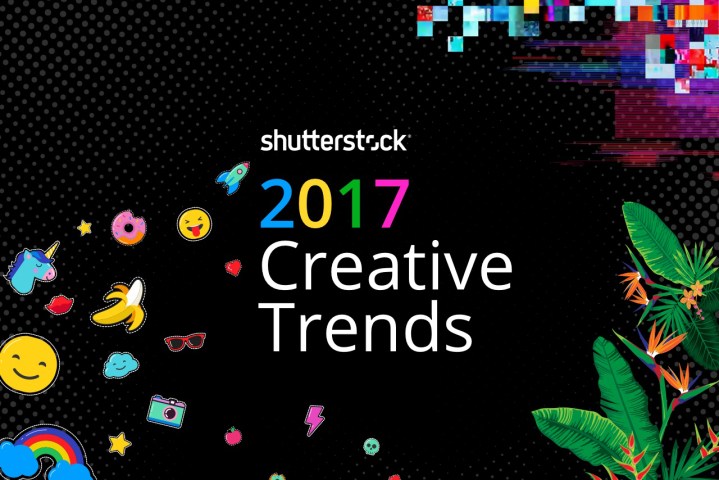
Search patterns give stock photography companies a unique toolset for predicting what the next popular images will look like. As the number of searches for certain topics rises and falls over the years, Shutterstock (along with several other stock companies) tracks the numbers and shares the statistics, offering a glimpse into popular images for both photographers and marketers alike. Some trends, like why “jalapeno” is trending in the U.S., are mysteries, while others, like the contradictory and overlapping searches for nostalgia and technology, offer insight into how popular culture influences the imaging world.
In the 2017 report, Shutterstock Creative Director Terrence Morash shared how culture and technology will likely impact photography this year.
Trending opposites
Shutterstock users are searching for “nostalgia” more than twice as often as in the previous year. While photos with a retro vibe have been coming in and out of popularity for several years, Morash says this year, the trend is less about a certain decade and more about broadly thinking of a simpler time. Along with photographs with a bit of vintage charm to them, graphics with retro colors and patterns are also growing in popularity.
Yet, at the same time, searches for cyber security more than tripled, while more users also searched for the fourth industrial revolution and virtual reality. Morash calls it a dichotomy not unlike the way Stranger Things mixes a 1980s setting with a sci-fi-like problem.
“The integration of technology is inevitable, but at the same time, we’re seeing a little bit more fear of that technology with searches for things like cyber security,” he explains. “At the same time, there’s a nostalgia that always comes through different eras. This year, it’s not as much about atheistic, but about the feeling of a simpler time.”
Shutterstock also puts “ephemeral internet” on the list of tech-inspired trends, or the less structured, off-the-cuff moments. While social media networks like Instagram are making the less polished photos popular, Morash says that trend is starting to move into the marketing and professional photography world as well. The documentary style is one that several other reports also agree will grow in popularity this year.
Another trend mixes technology and reality in a more literal way — “head-up display” saw a 135 percent increase, with digital projections mixing into real world scenes.
While an image on a screen only exists in two dimensions, photographs and designs that give the appearance of 3D are growing in popularity. Searches for “white texture” went up by 482 percent globally, adding a minimalist yet almost 3D appearance to designs. Morash says the trend is a mix between the real world and a digital interface, adding textures in two dimensions.
Shutterstock also monitors trends in graphic design and the top two for 2017 are opposites — nature and technology. Organic texture, a possible variation of the white texture trend, saw 74 percent more searches, while tropical vegetation and colors were searched for 44 percent more.
The biggest growth in technology-inspired design actually conveys a more dystopian feel, with 32 percent more users searching for technical glitches. The intricate patterns created by laser cutting is also growing in popularity.
While searches offer insight, the Shutterstock team also looks at social media, considering what images were liked most last year. Two of those trends are also opposites: images with both a muted color palette and vivid splashes of color received the most attention. Colorful images and shots with more muted and even white tones received more likes than the mid-toned shots. Images of reflections and extreme weather patterns also saw a noticeable increase in the number of social interactions.
Continuing trends
While some trends are opposites, others are continuations of previous trends. Emojis, on the list two years ago, were searched for 328 percent more than last year. Morash suggests that while emojis have become a sort of global messaging language, adoption into major ad campaigns, like #SayitwithPepsi that put the characteristic faces on every can last summer, is bringing them back into the limelight this year.
Trending video searches are also an expansion on 2016 trends. Wanderlust has once again made the list, along with a new, more responsible version of the trend, the mobile office. While “flat lay,” or a tabletop arrangement of objects viewed from above, was an earlier trend, the 2017 “top view” trend is a slight variation, often with hands doing some sort of task in the style of the popular how-tos on social media.
The annual trends report also looks at searches by country. Several areas searched for related topics, like “girl power” in Brazil and “women’s day” in Vietnam. Others are more predictable based on the region’s culture, like “lace” from Russia, “clean energy” from Canada and “artificial intelligence” in Japan. Still, others remain a mystery, like why searches for jalapenos had the most increase in the U.S.
Shutterstock compiles the annual report based on searches numbering in the billions. The data looks not at the most popular searches, but the searches that increased the most from previous years. The full report is available over at Shutterstock.






